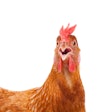The dollar has always been a headache for Latin Americans. Devaluations, exchange controls, restrictions and many more make this nightmare for many, during long periods of time (if not always).
However, there are some countries that have adopted the U.S. dollar as legal tender: Panama, for over a hundred years, but are also Ecuador and El Salvador in recent history.
In the latter two countries, I have interviewed poultry producers and I have asked them what has been the impact of the U.S. dollar in their poultry industries. The great positive impact is that there are many more possibilities of planning ahead, because the uncertainty of the exchange rate and financial problems that entails is discarded. Feed producers or integrated poultry producers buy grains and oilseeds at international prices in dollars. Period. And so it is with the genetic material, machinery, equipment and any other input that poultry production requires.
All of this, coupled with more modest interest rates, somehow fades the anguish and uncertainty of the future to provide reassurance. But like everything else, it also have its downside: competitiveness. These relatively small economies are not competitive in the international market. If there is any advantage of the devaluations of our peso, colones, bolivars, sols, quetzals, cordobas, lempiras or bolivianos against the U.S. dollar, it is the ability to become competitive for exports.
With devaluations, it becomes more expensive to buy in dollars, but there are things that will still remain cheaper. It is matter of how we see things and seeing which is better: pesos or dollars?
However, there are some countries that have adopted the U.S. dollar as legal tender: Panama, for over a hundred years, but are also Ecuador and El Salvador in recent history.
In the latter two countries, I have interviewed poultry producers and I have asked them what has been the impact of the U.S. dollar in their poultry industries. The great positive impact is that there are many more possibilities of planning ahead, because the uncertainty of the exchange rate and financial problems that entails is discarded. Feed producers or integrated poultry producers buy grains and oilseeds at international prices in dollars. Period. And so it is with the genetic material, machinery, equipment and any other input that poultry production requires.
All of this, coupled with more modest interest rates, somehow fades the anguish and uncertainty of the future to provide reassurance. But like everything else, it also have its downside: competitiveness. These relatively small economies are not competitive in the international market. If there is any advantage of the devaluations of our peso, colones, bolivars, sols, quetzals, cordobas, lempiras or bolivianos against the U.S. dollar, it is the ability to become competitive for exports.
With devaluations, it becomes more expensive to buy in dollars, but there are things that will still remain cheaper. It is matter of how we see things and seeing which is better: pesos or dollars?
















